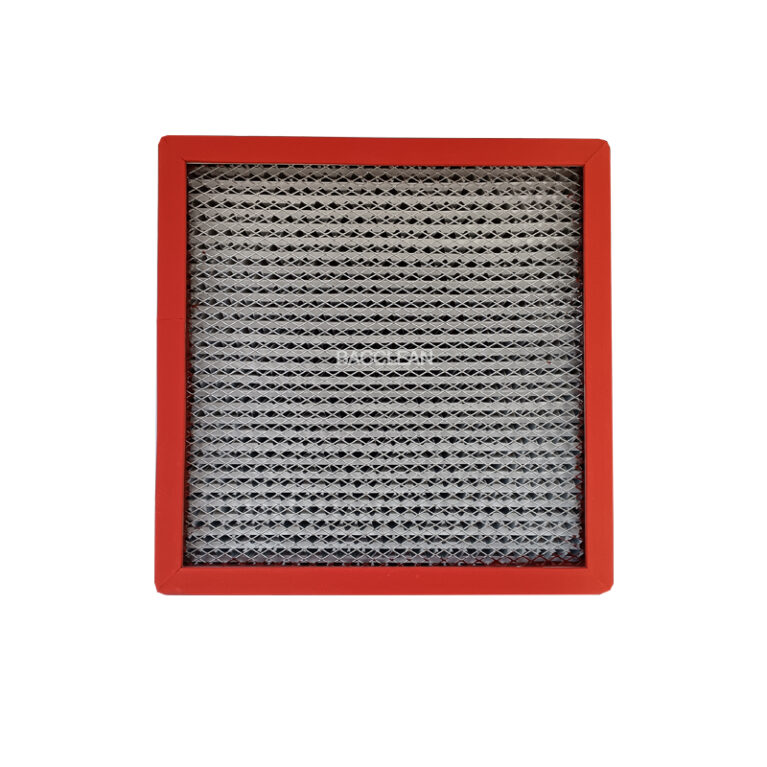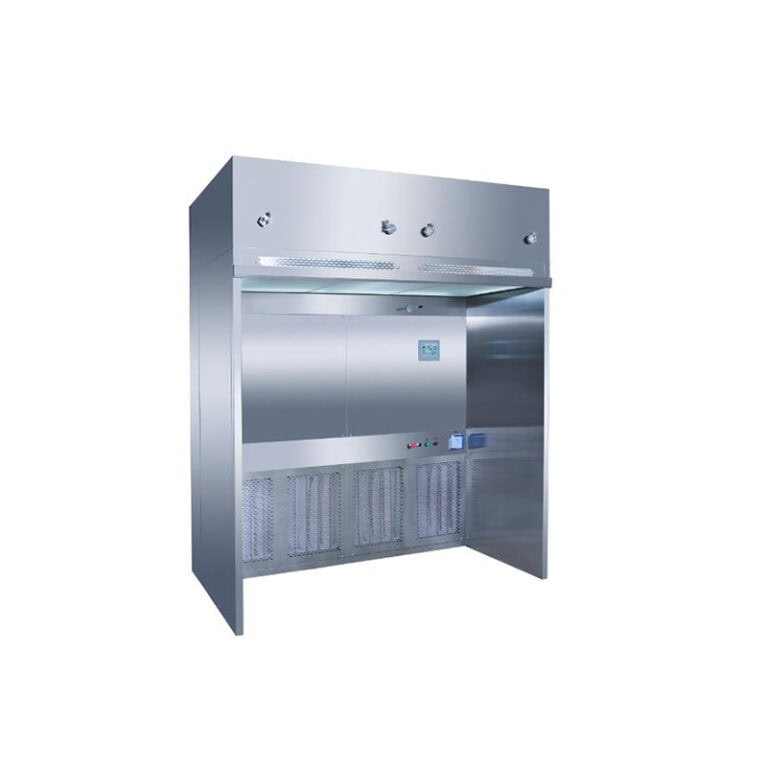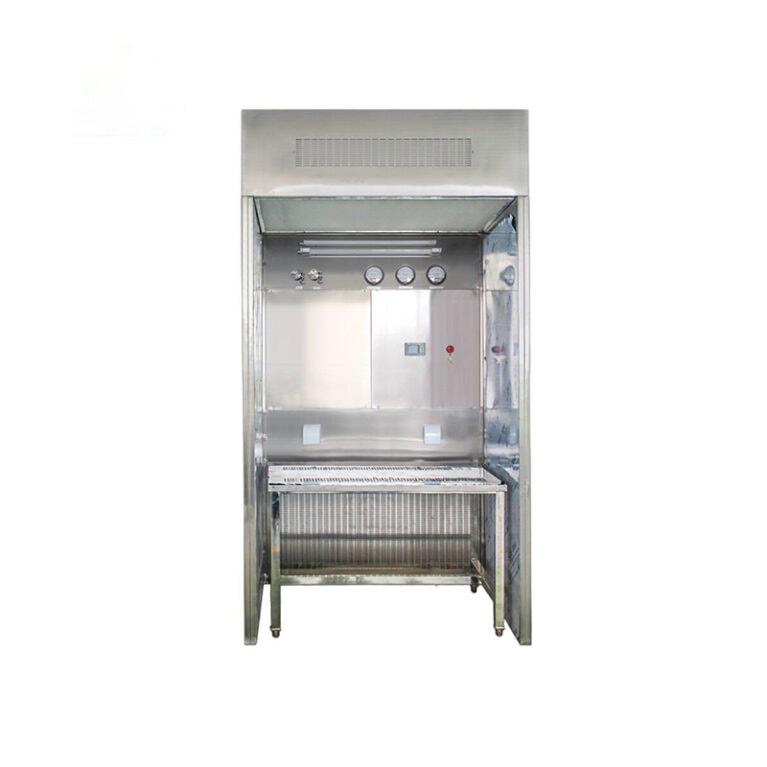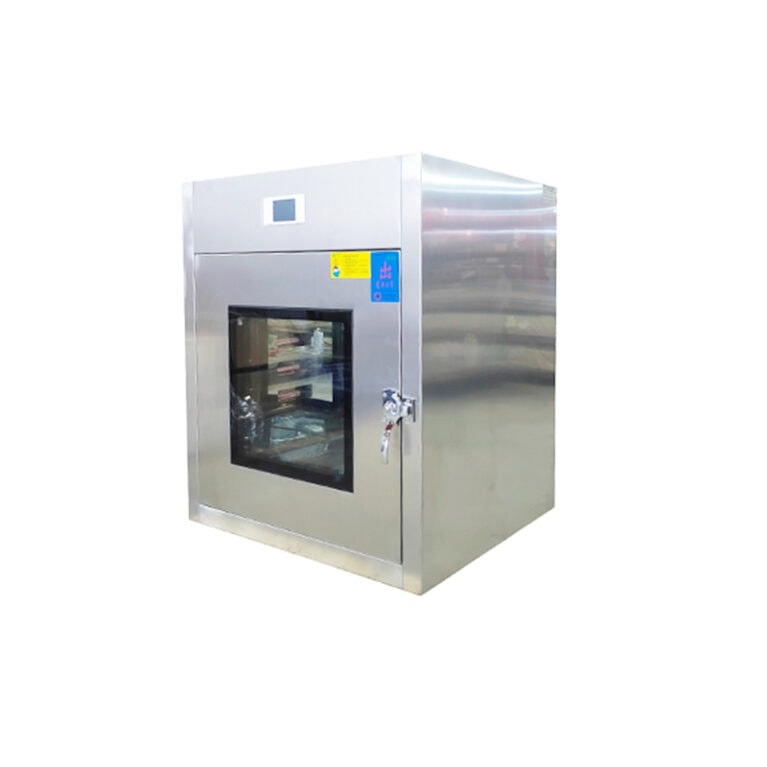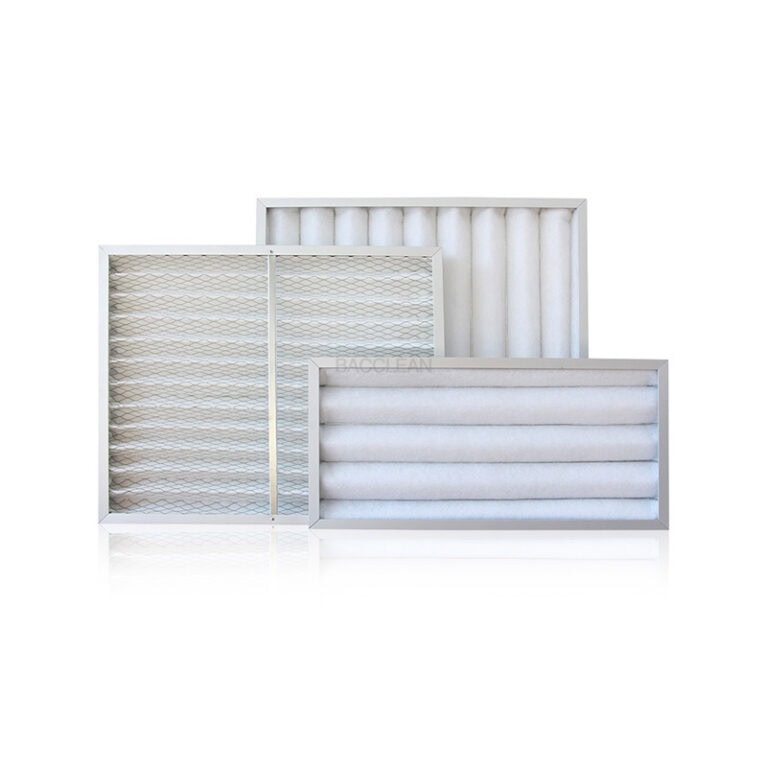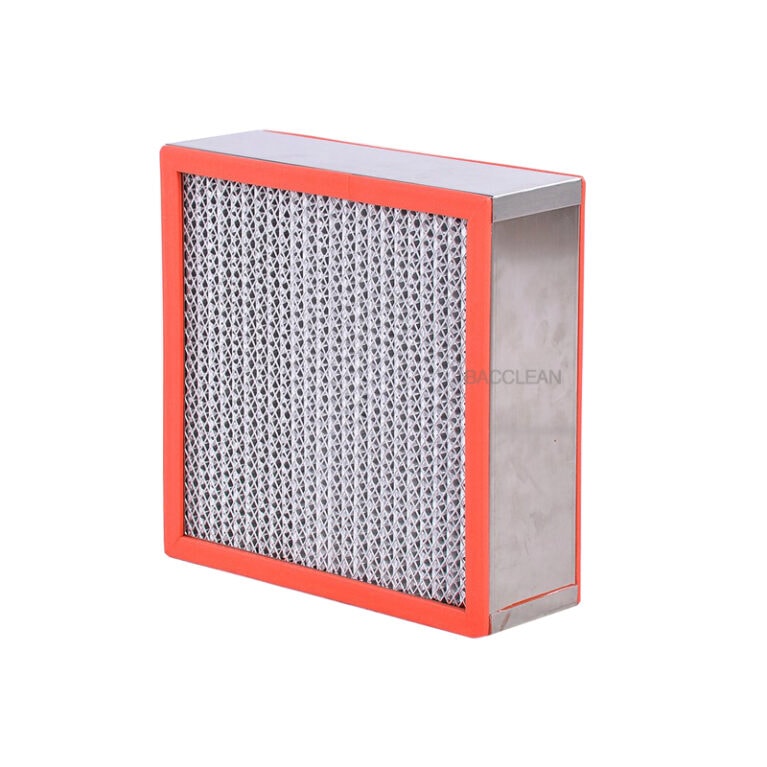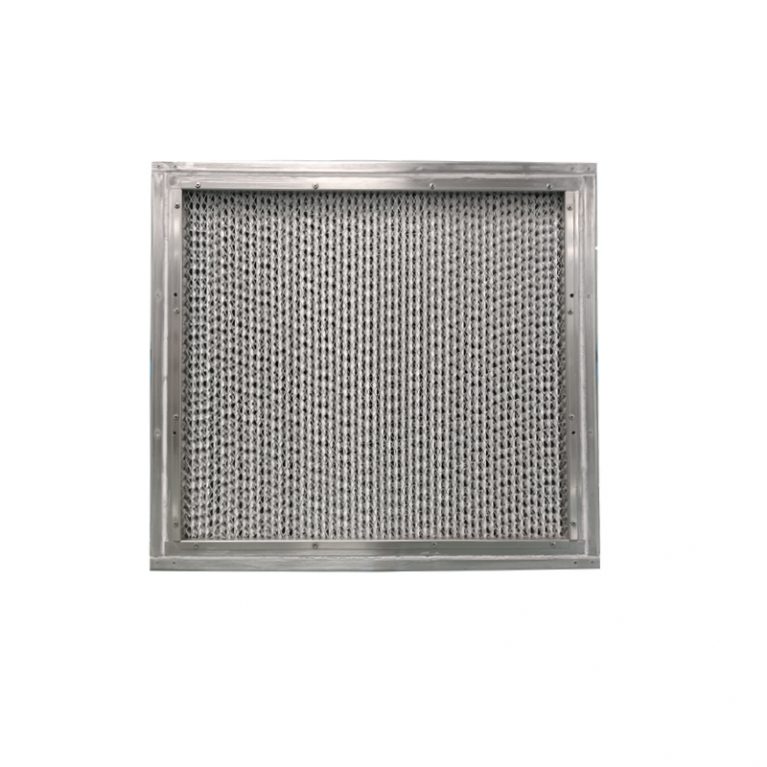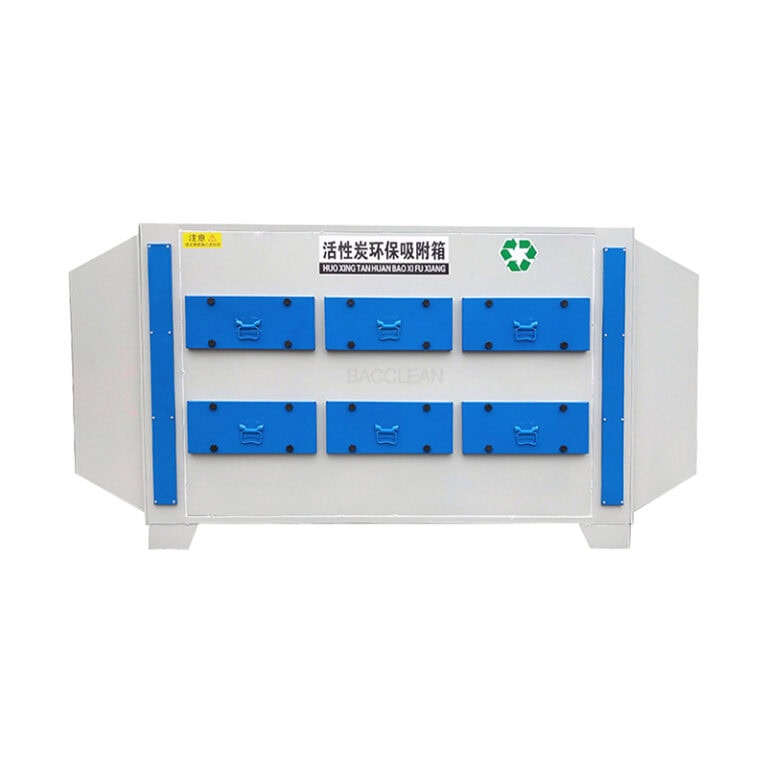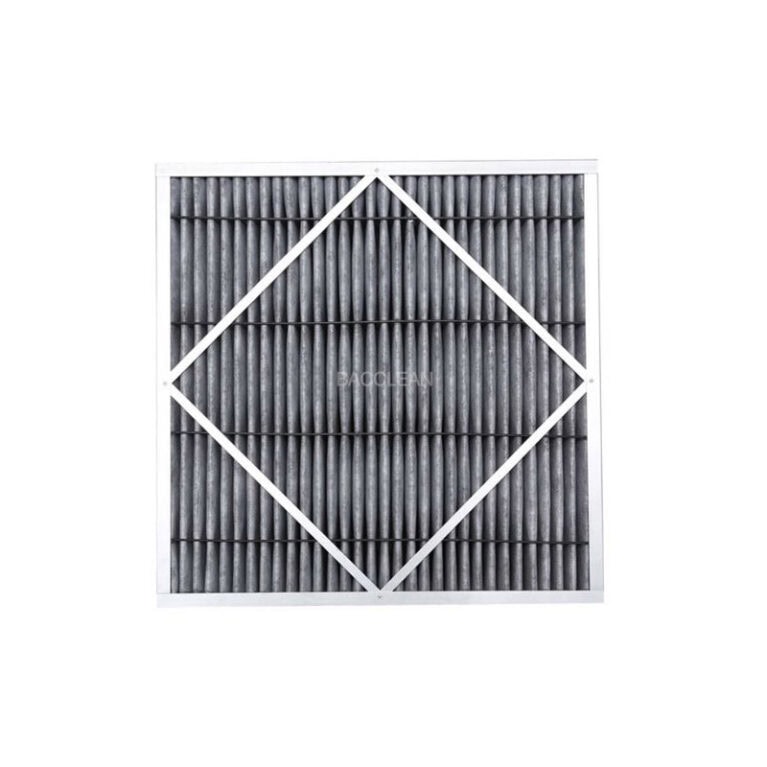The maintenance and upkeep cycle of the air shower transfer window should be comprehensively determined based on factors such as usage frequency, application scenarios (such as cleanliness level requirements), and the degree of environmental pollution. The core objective is to ensure its air shower purification effect, sealing performance, and equipment stability, and to prevent cross-contamination in the clean area due to improper maintenance. The following are the industry-wide standards for maintenance and servicing cycles and their specific contents, which can be adjusted according to actual circumstances
I. Daily Maintenance (Daily/After Each Use)
Frequency: Once before starting work daily + after each use (if the usage frequency is high, such as in the pharmaceutical or semiconductor industries)
Core objective: Timely remove surface contaminants to ensure normal basic functions, suitable for all application scenarios (such as food, electronics, medical care).
Specific content
Appearance and cleaning: Use a clean cloth dipped in neutral detergent (avoid corrosive reagents) to wipe the inner and outer surfaces of the transfer window and the observation window glass to remove dust, stains or residual materials, and prevent dust accumulation and bacterial growth.
Sealing performance inspection: After closing the transfer window door, observe whether the sealing rubber strips between the door body and the box body are tightly adhered, and whether there is any deformation, detachment or gap (if there is a gap, the door latch should be adjusted or the rubber strip replaced in time).
Functional test: Before each use, start the air shower function to confirm that the fan is operating normally (without abnormal noise), the air outlet is evenly distributed, and the interlock function is effective (when one side door is open, the other side door cannot be opened to prevent direct connection between the clean area and the non-clean area).
Ii. Regular Maintenance (Weekly/Monthly)
1. Weekly maintenance
Frequency: Once a week, suitable for medium-frequency usage scenarios (such as food processing, laboratories).
Content
Air nozzle and filter cleaning: Remove the primary air filter inside the transfer window (some models include a primary filter), and use compressed air to blow off the dust on the filter surface in reverse (pressure ≤0.3MPa to avoid damaging the filter). Check if the air nozzle is blocked. Use a fine brush to clean the accumulated dust inside the air nozzle to ensure smooth air flow.
Electrical component inspection: Check whether the buttons and indicator lights on the control panel are normal (such as “air shower”, “lighting”, “interlock” indicator lights), and whether the circuit joints are loose to avoid functional failure due to electrical faults.
2. Monthly maintenance
Frequency: Once a month, suitable for scenarios with high cleanliness requirements (such as GMP pharmaceutical workshops, semiconductor clean rooms).
Content
High-efficiency filter performance testing: Use a dust particle counter to test the cleanliness of the air after the air shower (such as Class 100/Class 1000 levels). If the particle count exceeds the standard, further check whether the high-efficiency filter is damaged or ineffective (it can be combined with a smoke test to identify leakage points).
Fan and wind speed detection: Use an anemometer to measure the wind speed at the outlet of the air nozzle (the standard requirement is ≥20m/s, and the specific requirements must comply with the equipment manual). If the wind speed is lower than the standard, check whether the fan belt is loose (some models are belt driven) and whether the fan impeller is dusty. If necessary, clean the impeller or adjust the belt tension.
Maintenance of door locks and hinges: Apply a small amount of food-grade or medical-grade lubricating oil to moving parts such as door locks and hinges (to avoid contaminating clean areas) to prevent rusting and jamming of components and ensure smooth door opening and closing.
Iii. Quarterly/Semi-annual Maintenance (Inspection of Key Components
Frequency: Once per quarter (in high-pollution scenarios, such as chemical and spraying auxiliary clean areas) or once per half year (in low-pollution scenarios, such as electronic component packaging)
Core objective: To investigate the wear and tear of core components, extend the service life of equipment, and ensure long-term stable operation.
Specific content
High-efficiency filter replacement assessment
If the high-efficiency filter has been in use for more than 1-2 years (or the resistance indicated by the differential pressure gauge exceeds twice the initial resistance), it is recommended to replace it even if the cleanliness test is temporarily qualified (the high-efficiency filter is a consumable, and long-term use is prone to increase air resistance and decrease purification efficiency due to dust accumulation).
When replacing, strictly follow the operation norms of the clean area to prevent the new filter from being contaminated during installation.
Motor and Circuit maintenance
Check the operating temperature of the fan motor (the casing temperature during normal operation should be ≤60℃, with no overheating phenomenon), and measure the insulation resistance of the motor (it needs to be ≥0.5MΩ to prevent leakage).
Check whether the circuit terminal blocks are oxidized or loose, and replace the aged wires or contactors to avoid electrical safety hazards.
Box structure inspection
Check whether the transfer window box has any deformation, weld cracking or other conditions. If it is used in high-temperature scenarios (such as material transfer after baking), confirm whether the high-temperature resistant coating of the box has peeled off to prevent damage to the box caused by high temperature.
Iv. Maintenance and Adjustment for Special Scenarios
High humidity/high dust environment (such as food baking, chemical raw material transfer) :
Shorten the maintenance cycle: Change daily cleaning to “after each use”, add a “filter screen drying” step for weekly maintenance (to prevent the filter screen from getting damp, growing mold or forming lumps), and add “rust prevention treatment of the box body” (wipe metal parts with rust inhibitor) every month.
Sterile scenarios (such as biopharmaceuticals, operating room assisted delivery) :
Daily cleaning should use disinfectants (such as 75% medical alcohol) instead of ordinary cleaning agents. Add “sterility tests” every month (such as using the smear method to detect surface microorganisms to ensure a sterile state).
I. Daily Maintenance (Daily/After Each Use)
Frequency: Once before starting work daily + after each use (if the usage frequency is high, such as in the pharmaceutical or semiconductor industries)
Core objective: Timely remove surface contaminants to ensure normal basic functions, suitable for all application scenarios (such as food, electronics, medical care).
Specific content
Appearance and cleaning: Use a clean cloth dipped in neutral detergent (avoid corrosive reagents) to wipe the inner and outer surfaces of the transfer window and the observation window glass to remove dust, stains or residual materials, and prevent dust accumulation and bacterial growth.
Sealing performance inspection: After closing the transfer window door, observe whether the sealing rubber strips between the door body and the box body are tightly adhered, and whether there is any deformation, detachment or gap (if there is a gap, the door latch should be adjusted or the rubber strip replaced in time).
Functional test: Before each use, start the air shower function to confirm that the fan is operating normally (without abnormal noise), the air outlet is evenly distributed, and the interlock function is effective (when one side door is open, the other side door cannot be opened to prevent direct connection between the clean area and the non-clean area).
Ii. Regular Maintenance (Weekly/Monthly)
1. Weekly maintenance
Frequency: Once a week, suitable for medium-frequency usage scenarios (such as food processing, laboratories).
Content
Air nozzle and filter cleaning: Remove the primary air filter inside the transfer window (some models include a primary filter), and use compressed air to blow off the dust on the filter surface in reverse (pressure ≤0.3MPa to avoid damaging the filter). Check if the air nozzle is blocked. Use a fine brush to clean the accumulated dust inside the air nozzle to ensure smooth air flow.
Electrical component inspection: Check whether the buttons and indicator lights on the control panel are normal (such as “air shower”, “lighting”, “interlock” indicator lights), and whether the circuit joints are loose to avoid functional failure due to electrical faults.
2. Monthly maintenance
Frequency: Once a month, suitable for scenarios with high cleanliness requirements (such as GMP pharmaceutical workshops, semiconductor clean rooms).
Content
High-efficiency filter performance testing: Use a dust particle counter to test the cleanliness of the air after the air shower (such as Class 100/Class 1000 levels). If the particle count exceeds the standard, further check whether the high-efficiency filter is damaged or ineffective (it can be combined with a smoke test to identify leakage points).
Fan and wind speed detection: Use an anemometer to measure the wind speed at the outlet of the air nozzle (the standard requirement is ≥20m/s, and the specific requirements must comply with the equipment manual). If the wind speed is lower than the standard, check whether the fan belt is loose (some models are belt driven) and whether the fan impeller is dusty. If necessary, clean the impeller or adjust the belt tension.
Maintenance of door locks and hinges: Apply a small amount of food-grade or medical-grade lubricating oil to moving parts such as door locks and hinges (to avoid contaminating clean areas) to prevent rusting and jamming of components and ensure smooth door opening and closing.
Iii. Quarterly/Semi-annual Maintenance (Inspection of Key Components
Frequency: Once per quarter (in high-pollution scenarios, such as chemical and spraying auxiliary clean areas) or once per half year (in low-pollution scenarios, such as electronic component packaging)
Core objective: To investigate the wear and tear of core components, extend the service life of equipment, and ensure long-term stable operation.
Specific content
High-efficiency filter replacement assessment
If the high-efficiency filter has been in use for more than 1-2 years (or the resistance indicated by the differential pressure gauge exceeds twice the initial resistance), it is recommended to replace it even if the cleanliness test is temporarily qualified (the high-efficiency filter is a consumable, and long-term use is prone to increase air resistance and decrease purification efficiency due to dust accumulation).
When replacing, strictly follow the operation norms of the clean area to prevent the new filter from being contaminated during installation.
Motor and Circuit maintenance
Check the operating temperature of the fan motor (the casing temperature during normal operation should be ≤60℃, with no overheating phenomenon), and measure the insulation resistance of the motor (it needs to be ≥0.5MΩ to prevent leakage).
Check whether the circuit terminal blocks are oxidized or loose, and replace the aged wires or contactors to avoid electrical safety hazards.
Box structure inspection
Check whether the transfer window box has any deformation, weld cracking or other conditions. If it is used in high-temperature scenarios (such as material transfer after baking), confirm whether the high-temperature resistant coating of the box has peeled off to prevent damage to the box caused by high temperature.
Iv. Maintenance and Adjustment for Special Scenarios
High humidity/high dust environment (such as food baking, chemical raw material transfer) :
Shorten the maintenance cycle: Change daily cleaning to “after each use”, add a “filter screen drying” step for weekly maintenance (to prevent the filter screen from getting damp, growing mold or forming lumps), and add “rust prevention treatment of the box body” (wipe metal parts with rust inhibitor) every month.
Sterile scenarios (such as biopharmaceuticals, operating room assisted delivery) :
Daily cleaning should use disinfectants (such as 75% medical alcohol) instead of ordinary cleaning agents. Add “sterility tests” every month (such as using the smear method to detect surface microorganisms to ensure a sterile state).

